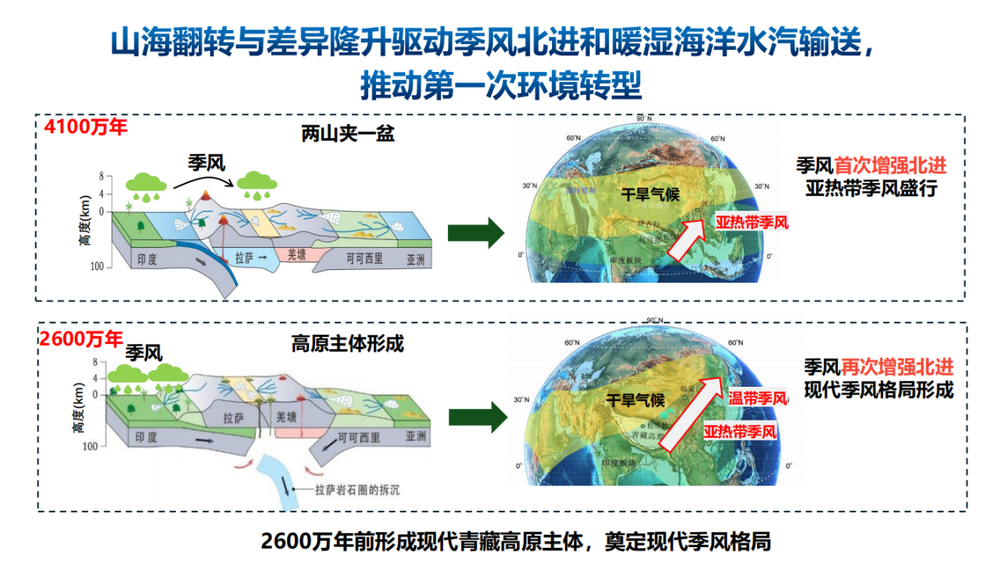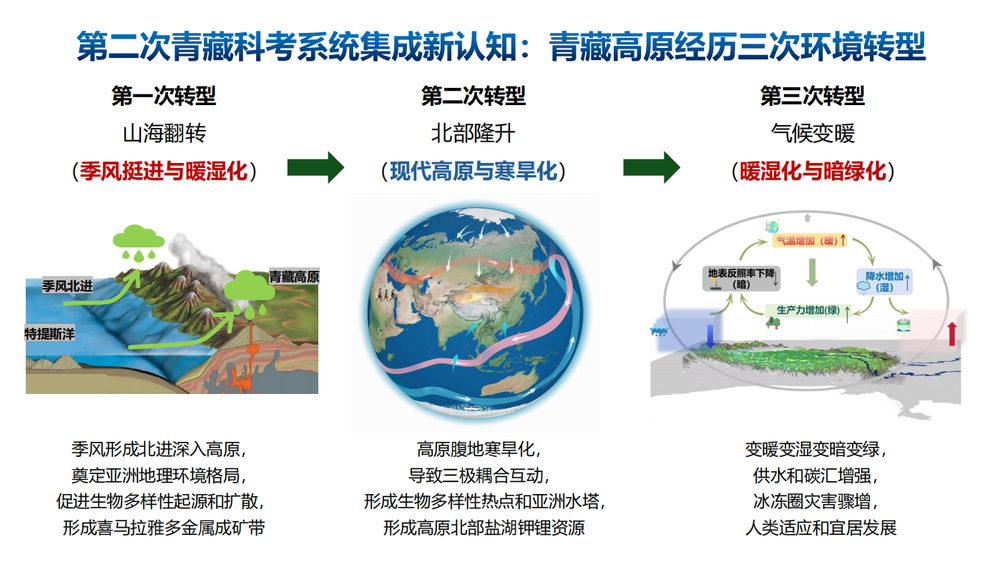On November 19-20, 2025, the Second Tibetan Plateau Scientific Expedition Comprehensive Integration and Application Results Release Conference was held in Lhasa. During the morning session, the expedition team leader released the Ten Major Comprehensive Integration Application Achievements of the Second Tibetan Plateau Scientific Expedition and systematically elaborated on new understandings regarding environmental transformation of the Tibetan Plateau.
These ten major application achievements include:
1. Providing comprehensive scientific support for ecological protection legislation of the Tibetan Plateau, offering legal safeguards for the protection of the Tibetan Plateau ecological barrier;
2. Establishing an Earth system comprehensive observation and early warning platform to serve major engineering projects and cross-border disaster prevention and control;
3. Proposing construction plans for the Tibetan Plateau National Park Cluster and optimization of the natural protected area system, scientifically supporting the establishment of national parks such as Qiangtang and Three-River-Source;
4. Assessing the positive outcomes of major ecological engineering projects on the Tibetan Plateau, strengthening the ecological security barrier;
5. Proposing optimal ecological protection and disaster avoidance solutions for the Sichuan-Tibet Railway, ensuring safety of major transportation projects;
6. Innovating disaster prevention technologies in permafrost regions, supporting construction of the Tibet Expressway;
7. Assessing ice-water-sediment disaster risks in the Yarlung Tsangpo River basin, serving major hydropower project construction;
8. Achieving breakthroughs in understanding current status and prospects of lithium, potassium, oil, gas and other mineral resources, supporting strategic resource and energy reserve base construction on the Tibetan Plateau;
9. The Tibetan Plateau greenhouse gas scientific monitoring network and “Gongga” system continuously providing China’s independent systems and data for carbon accounting, serving dual carbon goals and climate change response;
10. Proposing new development models for border area strengthening, consolidation and revitalization, providing technological support for national security barrier construction.
Regarding new understandings of environmental transformation on the Tibetan Plateau, it was introduced: The Second Tibetan Plateau Scientific Expedition discovered that the Tibetan Plateau has undergone three environmental transformations, marking the first time Chinese scientists have proposed the “Third Environmental Transformation” of the Tibetan Plateau.
First Environmental Transformation:
Mountain-sea overturning and differential uplift drove monsoon northward advancement and warm, moist marine air transport, triggering the first environmental transformation. 41 million years ago, monsoons first intensified and moved northward, with subtropical monsoons prevailing; 26 million years ago, the main body of the modern Tibetan Plateau formed, establishing modern monsoon patterns. This drove rapid biodiversity evolution, making the region a center for species origin, differentiation and dispersal. The Himalayan lithium-beryllium rare metal metallogenic belt formed.

Second Environmental Transformation:
Northern plateau uplift and formation of the modern Tibetan Plateau established cold-arid conditions and three-polar linkage patterns,促成促成促成促成促成促成促成促成促成促成促成促成促成促成促成促成促成促成促成促成促成促成促成促成促成促成促成促成促成促成促成促成促成促成促成促成促成促成促成促成促成促成促成促成促成促成促成促成促成促成促成促成促成促成促成促成促成促成促成促成促成促成促成促成促成促成促成促成促成促成促成促成促成促成促成促成促成促成促成促成促成促成促成促成促成促成促成促成促成促成促成促成促成促成促成促成促成促成促成促成促成促成促成促成促成促成促成促成促成促成促成促成促成促成促成促成促成促成促成促成促成促成促成促成促成促成促成促成促成促成促成促成促成促成促成促成促成促成促成促成促成促成促成促成促成促成促成促成促成促成促成促成促成促成促成促成促成促成促成促成促成促成促成促成促成促成促成促成促成促成促成促成促成促成促成促成促成促成促成促成促成促成促成促成促成促成促成促成促成促成促成促成促成促成促成促成促成促成促成促成促成促成促成促成促成促成促成促成促成促成促成促成促成促成促成促成促成促成促成促成促成促成促成促成促成促成促成促成促成促成促成促成促成促成促成促成促成促成促成促成促成促成促成促成促成促成促成促成促成促成促成促成促成促成促成促成促成促成促成促成促成促成促成促成促成促成促成促成促成促成促成促成促成促成促成促成促成促成促成促成促成促成促成促成促成促成





